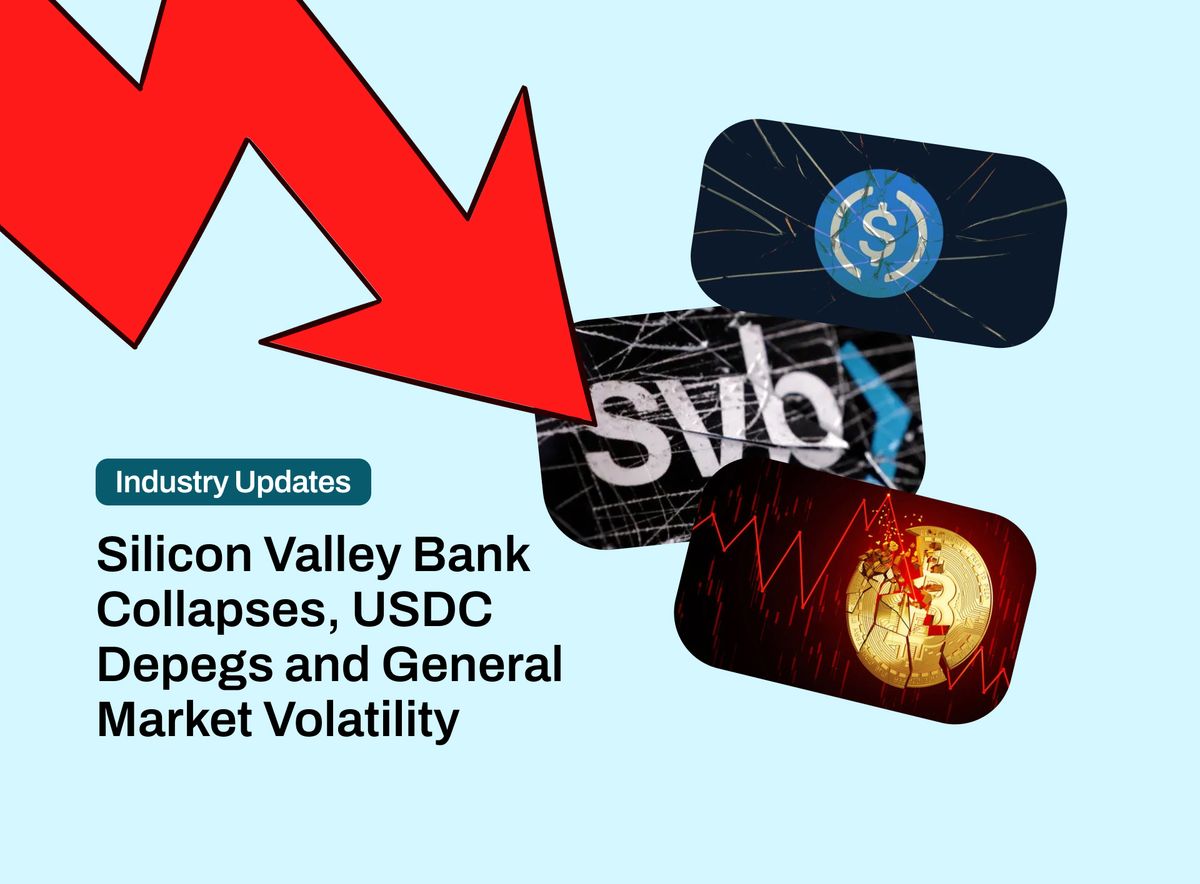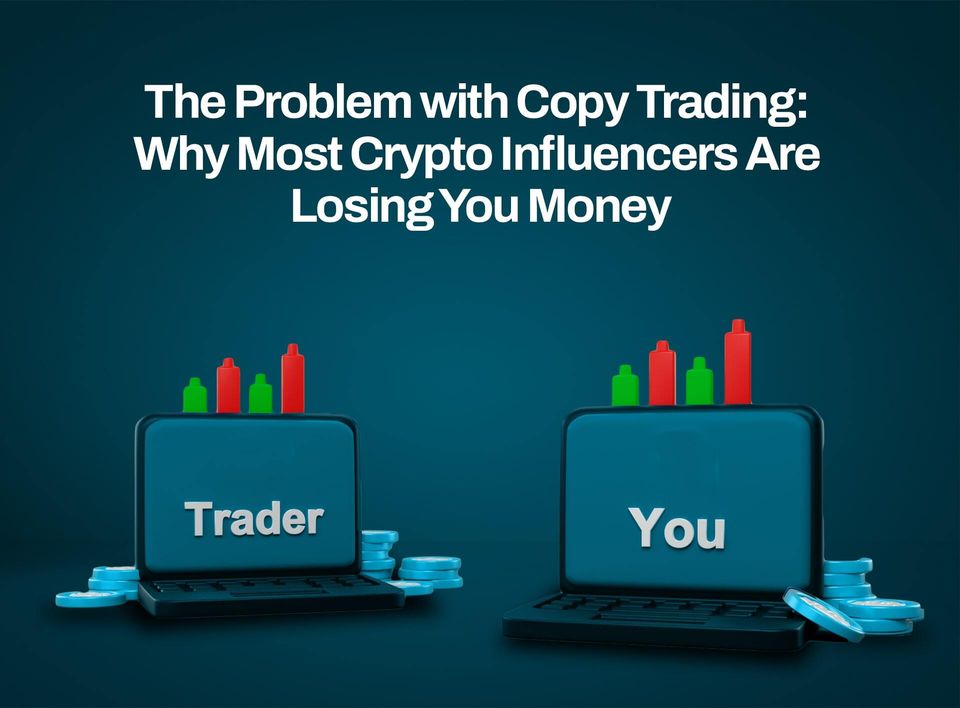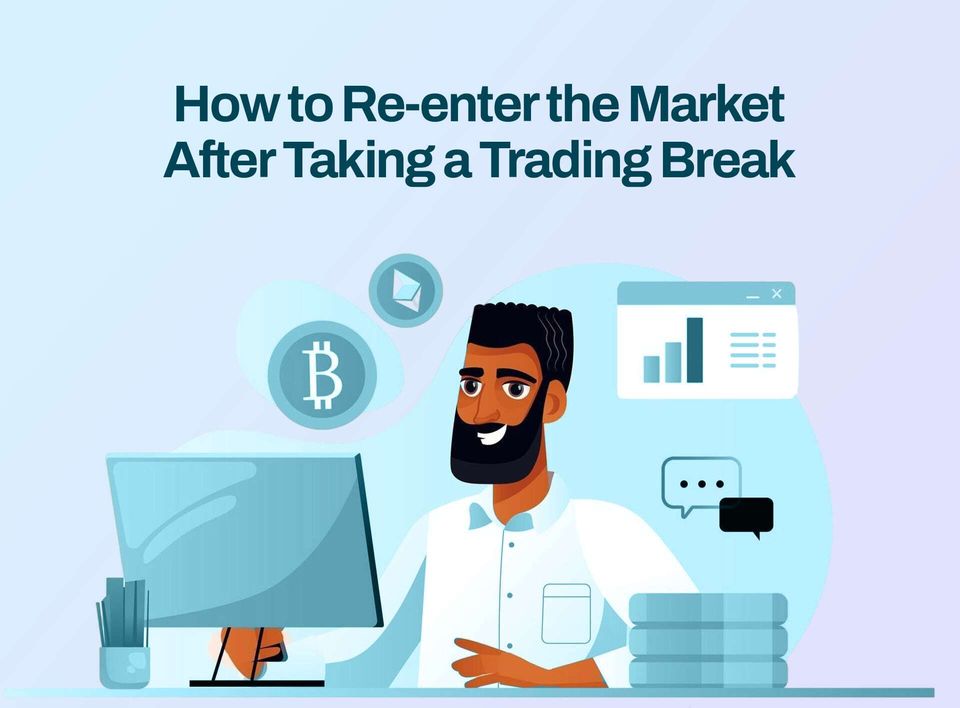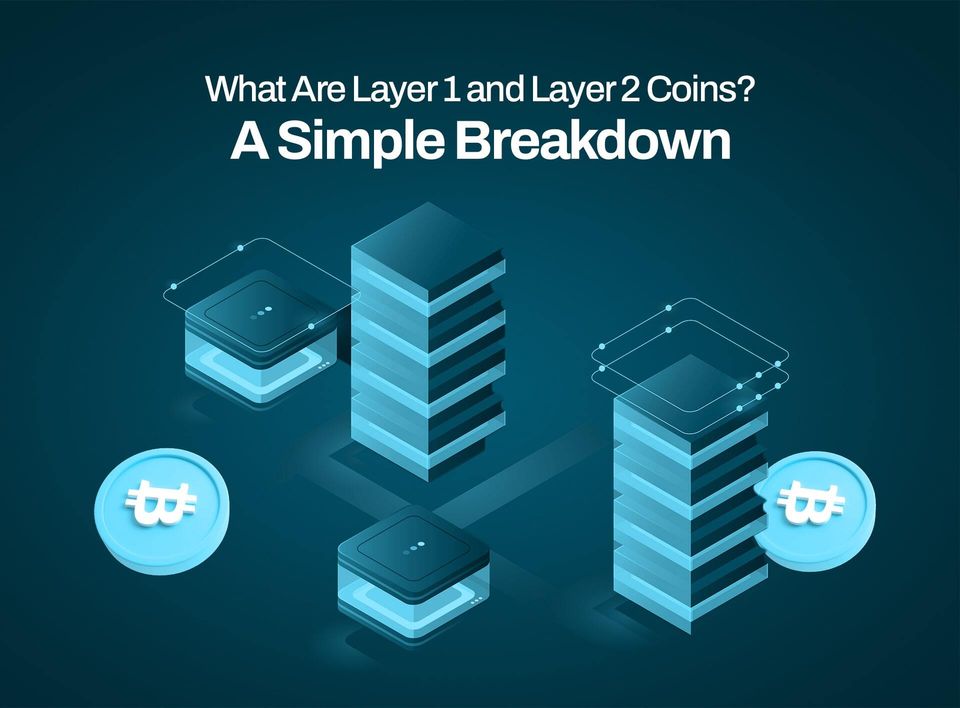Why Silicon Valley Bank Collapsed (and more)
Silicon Valley Bank (SVB) collapsed due to liquidity challenges and was officially shut down by regulators on Friday, 10th March 2023.

*Last updated March 13th 2023, by 12.44pm
Quick Facts
- Silicon Valley Bank (SVB) collapsed due to liquidity challenges and was officially shut down by regulators on Friday, 10th March, 2023.
- SVB's shares were trading at about $280 on Monday and, by Friday, 10th March 2023, fell to about $106.
- Circle, a U.S-based cryptocurrency firm that issues a stablecoin called USDC, has about $3.3 billion of USDC deposited at Silicon Valley Bank.
- USDC, a crypto stablecoin, which is meant to be 1 USDC to 1$, fell to 87 cents on Saturday morning, 11th March 2023, after it announced its money was stuck in the Silicon Valley Bank.
What Is a Liquidity Challenge?
Before we start, let’s briefly explain what a liquidity challenge is. A liquidity challenge is a situation where a company does not have enough cash at hand to pay customer withdrawals, offer loans and manage its day-to-day operations.
Why Did Silicon Valley Bank Collapse?
SVB Financial is the parent company of Silicon Valley Bank. Silicon Valley Bank (SVB) has many venture-capital firms and startups as clients. These clients raised a lot of money during the 2019 -2021 funding boom from Venture Capitalists, which they deposited into the Silicon Valley Bank.
To put the deposit growth into perspective, Silicon Valley Bank closed the first quarter of 2020 with over $60 billion in total deposits, but by the end of the first quarter of 2022, they had nearly $200 billion in total deposits.
Having this large volume of deposits sitting idle in their bank didn’t seem financially wise, so the bank spent over $80 billion buying long-term U.S. treasury bonds that have about 3.8% annual interest rate and government-backed mortgage securities that have about 1.5% annual interest rate.
A Treasury bond is a long-term U.S. government debt obligation which matures between 20-30 years. In simpler terms, buying a T-bond is lending the government money to run the country, and they'll pay back with accumulated fixed interest when the bond matures.
A mortgage is an agreement between you and a lender that gives you money to build or buy a house. In the event you are unable to repay the loan and interest, the lender reserves the right to recover his money by selling the house and taking his share of the proceeds.
Mortgage securities, on the other hand, are debt obligations which mature between 5-30 years. In simple terms, buying a government-backed mortgage security means you are lending money to mortgage banks, with the government acting as a regulator. Then the mortgage banks will give out loans to potential home buyers and property owners.
These mortgage securities and treasury bonds are smart investments because there's almost zero risk of the U.S. government defaulting on payment, and the interest rates are fixed, so there’s no risk of volatility.
It only becomes a problem when the bank needs to quickly sell the bonds or securities to raise money or fix a liquidity capital problem (as explained at the beginning of the article), like we're seeing with Silicon Valley Bank.
These bonds and securities would be worth less on the market than their value in the bank's accounting records because the market interest rates have increased significantly higher than when they were bought. Also, to get buyers to buy your securities and bonds, you may have to sell below market rate.
Remember, the interest rate given by the government is fixed, which means that whether the market interest rates go up or down, the government pays exactly the agreed-upon rate. As a result, the bank would sell the securities and bonds at a loss.
As if that wasn't enough, SVB's deposit inflows from clients dropped drastically, and outflows sharply increased. Why? Clients were spending more than they were making, and funding had stopped coming in from public offerings and fundraisings.
In addition, the US Federal Reserve increased the interest rate significantly. The federal rate, as of 7th March 2023, was 4.75%, 3.25% higher than the government-backed mortgage security annual interest rate and 0.95% higher than the T-bonds annual interest rate. This was a big problem.
The bank was also finding it difficult to bring in new deposits because potential depositors demanded higher interest rates due to the government's increase in interest rates. By the end of 2022, SVB had $173 billion in deposits, a significant decrease from the $200 billion recorded at the end of the 2022 first quarter.
2023 came, and the deposits were still not looking good. The bank projected its deposits would fall by a single-digit percentage by the end of the first quarter of 2023, but as of March 8th, 2023, it had dropped by a double-digit percentage.
On Wednesday, March 8th, 2023, Silicon Valley bank announced that it had sold a massive portion of its securities (the treasury bonds and government-backed securities) worth $21 billion at a $1.8 billion loss. The sale was to help the bank raise money to pay interest, pay out withdrawals and have money to lend to clients. They also planned to raise nearly $2.25 billion in capital.
After SVB announced the sale, its share price crashed by 60%, making it harder to raise more money to fix its capital and liquidity problems.
At the same time, venture capital firms reportedly began advising the companies they were funding to withdraw their money from SVB immediately. On Thursday, Silicon Valley Bank customers and clients tried to withdraw $42 billion in total, which was a quarter of the bank's total deposits, according to a filing by California regulators.
By the close of business that day, SVB had a $958 million negative cash balance and failed to raise enough collateral to balance their accounts.
That was the start of the whole collapse.
What Will Happen To Customer Deposits In Silicon Valley Bank Now?
Many of the deposits held by the bank are bigger amounts than what the Federal Deposit Insurance Corp can insure. The FDIC can only insure up to $250,000 per depositor, per institution and per ownership category.
Silicon Valley bank reported that the number of deposits in its U.S. branches that have passed the FDIC insurance limit is up to $151.5 billion.
On their end, the FDIC announced on Friday that customers whose deposits are insured would have access to withdraw their assets by Monday morning. Those with uninsured deposits will receive some part of their money as an advance.
The rest of their deposits will be given to them as a "receivership certificate." A receivership certificate is a certificate or evidence that you’re being owed. This Certificate/Evidence is usually issued by the court or a government agency as proof that the owed amount will be paid to the receiver within a timeframe.
As the FDIC sells off Silicon Valley Bank assets, the holders of these certificates will continue to get paid until what they’re owed is completely paid off.
What happens next for Silicon Valley Bank and SVB Financial?
The situation is still unfolding, but here's what we know so far:
- Regulators officially shut down Silicon Valley bank on Friday, 10th March 2023.
- The bank's parent company, SVB Financial, has been unable to raise the necessary capital and is looking to sell the bank to a major financial institution. This potential sale is proving difficult to close because it's currently hard to assess the bank's value because many people are pulling out their money.
- Customers with insured deposits at Silicon Valley bank will have access to their money by Monday morning, while those with uninsured deposits will receive some part of their money as an advance.
How did the Silicon Valley Bank collapse affect USDC, and why did it lose its $1 peg?
USDC is a stablecoin issued by Circle Internet Financial LTD. Circle revealed on Friday that it had $3.3 billion stuck in Silicon Valley Bank.
USDC is pegged to the dollar, which means 1 USDC = $1. Stablecoins maintain their value by ensuring for 1 stablecoin issued or held by a customer, there is a corresponding $1 held in the bank, and users can always swap their 1 stablecoin for $1.
After the announcement on Friday morning, coupled with the fall in SVB price share, USDC lost its peg on Saturday and fell below 87 cents. This means 1 USDC was now equal to $0.87.
Circle Internet Financial announced on Saturday that it would cover any deficit or reduction in the assets backing its stablecoin if Silicon Valley Bank does not release the entire $3.3 billion cash reserve it was holding.
In a blog post, Circle said it "will stand behind USDC and cover any shortfall using corporate resources, involving external capital if necessary."
At the time of writing this article, 1 USDC was trading around $0.96, according to coinmarketcap.
Related: Crypto-friendly Silvergate Bank Liquidation
Silvergate Bank, a major crypto-friendly bank, announced on Wednesday, March 8, that they would cut down operations and liquidate the bank. The announcement sent the bank’s share price crashing from $4.91, a steep drop from its January price of about $16.
The bank had been struggling financially for a while, and In January, its earnings report revealed that it lost $1 billion in the last quarter of 2022 after its customers withdrew a total of $8.1 billion.
Silvergate also borrowed $4.3 billion from the Federal Home Loan Bank (FHLB) system. Its deposits from major crypto clients dropped from $11.9 billion at the end of Q3 of 2022 to $3.8 billion in Q4 2022.
Then, on March 1st, it filed a report that its financial state was significantly worse than the previous January statement.
Furthermore, its close involvement with FTX and Alameda had worsened the bank’s finances. Both FTX and its associated private trading firm Alameda Research were Silvergate customers.
The alleged misappropriation of funds between the two firms led the U.S. Justice Department to announce an investigation on the 2nd of February, 2023, into Silvergate bank’s role in the whole fiasco.
Silvergate's shares dropped 20% that day.
Silvergate Capital Corporation said the decision to wind down operations was "in light of recent industry and regulatory developments." According to the corporation, the bank liquidation plan included "full repayment of all deposits".
Earlier in March, the bank also shut down its Silvergate Exchange Network, which lets crypto exchanges move money between themselves and other institutions. This move was the final push that made major crypto companies, including Circle, announce the termination of their business relationship with Silvergate.
Update On The Market Situation From Obiex
We have been monitoring the market situation since the Silicon Valley Bank and USDC depeg. We wish to share the following updates:
- All assets held in your Obiex wallet are safe and secure.
- To protect your assets, trading and swapping USDC on Obiex has been temporarily suspended due to the current USDC volatility. However, you can still deposit and withdraw USDC.
- You can still trade every other crypto asset and asset pair.
- The market is very volatile; hence prices are at a disparity. By disparity, it means that other stablecoins are affected.
- Traders and investors have been swapping their USDC for other assets in high volumes since Friday’s USDC depegging to protect their assets from the volatility.
- Although Stablecoins are pegged 1:1 with the US dollar, their prices can be affected and changed by demand and supply. For example, in the past 24 hours, when traders were swapping their USDC for USDT, this caused USDC’s $1 peg to fall because most traders were selling off their USDC in high volumes.
- On the other hand, because most traders were swapping from USDC to USDT, and there was high demand for USDT, its value went from $1 (its pegged value) to as high as $1.6.
- The price ratio of USDT:USDC has reached a high of 1.6: 1 within the past 24 hours. At the time of writing this post, USDT: USDC is trading around 1.05:0.9.
- This demand and supply, as well as Stablecoins price disparity, also affected pairs like BTC/USDT and BTC/USDC, causing their prices to differ from each other, which is an anomaly.
What Should You Do Next?
The market is heavily volatile right now, but crypto market crashes and instability are not new. If anything, they are an integral part of the trading experience. To make handling the current market (a little) more manageable, here are three things you can do to keep your head above the water and weather the storm:
Buy Low, Sell High
Remember the golden rule - buy low, sell high. Look at the charts, research the asset then buy the quantity you can afford.
On the other hand, selling right now might make you lose out on the potential profit ahead. It may very well be in your best interest to Hold On For Dear Life to your coins. However, if you decide to sell, properly evaluate your portfolio and the losses you might incur from selling. You should also note that when people sell their coins during a market crash, the price of assets falls even further.
Wait it out
Sometimes, the best line of action is no action at all. Market crashes are normal. You don’t have to do anything just because the charts are red. The USDC situation is not the same as the Terra Luna UST one. Don’t allow yourself to fall prey to FUD (Fear, Uncertainty and Doubt). Keep an eye on the market but don’t let yourself be overwhelmed by the volatile asset values.
Reorganise your Portfolio
One of the primary keys to success in crypto trading is constant diversification. After the crypto market has gone up or become more stable, it is advisable to analyse the assets in your portfolio. Evaluate your crypto coins and how they were affected by the crash. Doing this will give you ample information to help you reorganise your crypto investments.
Update on the Silicon Valley Bank Situation
On Sunday, Mar 12, 2023, US Treasury, Federal Reserve Board, and the Financial Deposit Insurance Corporation (FDIC) announced in a statement that every depositor who had money in Silicon Valley Bank would be fully protected against the bank’s liquidity challenge.
They stated that the money which will be used to pay the Silicon Valley Bank customers will come from the FDIC's Deposit Insurance Fund (DIF).
This Insurance Fund is funded by fees paid by banks and earnings banks make from investing in securities such as Treasury Bonds. The Deposit Insurance Fund presently has over $100 billion in it, according to officials.
The statement further stated, "After receiving a recommendation from the boards of the FDIC and the Federal Reserve and consulting with the President, Secretary (Janet) Yellen approved actions enabling the FDIC to complete its resolution of Silicon Valley Bank, Santa Clara, California, in a manner that fully protects all depositors. "
Read the complete statement here.
This means that from Monday, Mar 13, 2023, Silicon Valley Bank customers would be able to withdraw and access their money.
The U.S. government has also assured Silicon Valley Bank customers and clients that they would be able to access their money even if the amount was higher than the $250,000 limit insured by the FDIC.
This move by the Federal Reserve and FDIC seems to have stopped the potential complete breakdown of business across the market and the spread of the financial crisis to other industries like healthcare and tech.
They are also offering extra funding to some banks to reduce any effects the SVB crisis may have had on their operations.
On the UK side of things, HSBC, a British multinational universal bank and financial services holding company, bought Silicon Valley Bank's UK arm for £1 ($1.21). The deal was announced in the early hours of Monday morning, 13th March.
However, the deal does not include any assets or liabilities the SVB U.K. bank branch may own; SVB U.K currently has loans of about £5.5 billion and deposits of around £6.7 billion.
That means they are not paying off any debts the U.K. Silicon Valley Bank may owe. But the good news is that customers banking in the U.K. Silicon Valley Bank can now access and withdraw their money.
Disclaimer: This article was written to provide guidance and understanding. It is not an exhaustive article and should not be taken as financial advice. Obiex will not be held liable for your investment decisions.




